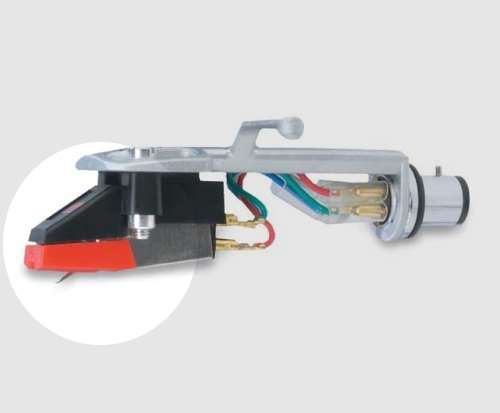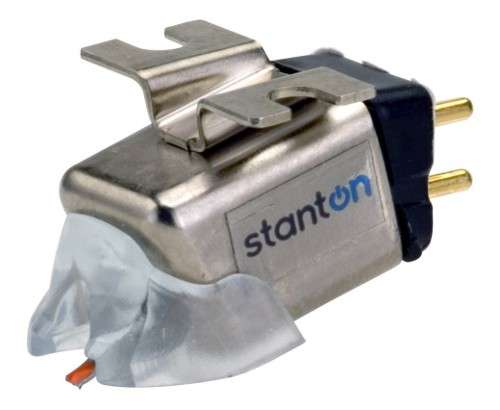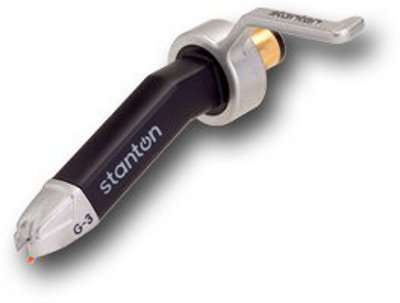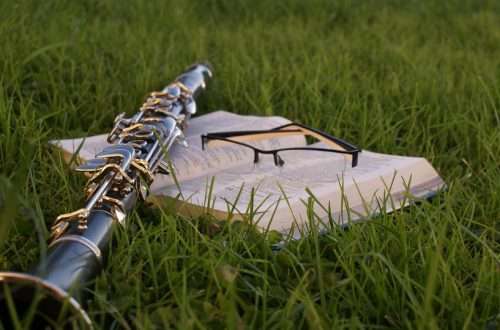
Cartridges and needles
The cartridge is the most important part of the turntable. The stylus is attached to it, which is responsible for the sound coming from the speakers from the black disc. When buying a used turntable, you should remember that the price of a new cartridge should be added to its price, where the only wearing element is the needle, but the cost of replacing it is not much lower than replacing the entire cartridge.
How it works?
The needle, placed in the disc groove, is set in motion by the unevenness of the groove in the rotating disc. These vibrations are transferred to the cartridge to which the stylus is attached. The shape of these non-uniformities is such that the vibrations of the needle reproduce the acoustic signal recorded on the disc during its recording.
A bit of history
In the oldest turntables, the needle was made of steel, later the needles were ground from sapphire. The point of the needle was ground so that the radius of its curvature was three thousandths of an inch (0,003 ″, ie 76 µm) for older (ebonite, so-called “standard groove” plates, played at 78 rpm) or 0,001 ″ (25 µm) for newer (vinyl) records, the so-called “fine-groove” records.
Until the 70s, there were turntables in which cartridges with both types of needles were installed, which made it possible to play all records available on the market and preserved in archives. Needles for reproducing fine-groove records were usually marked with green, and with standard-groove ones – red.
Also, the permissible pressure of the needle on the fine-groove plate is much lower than on the standard-groove plate, no more than 5 grams was recommended, which still caused quite fast wear of the plates (modern mechanisms balancing the arm with the insert allow working with a pressure of 10 mN, i.e. approx. 1 gram).
With the introduction of stereophonic recording on gramophone records, the requirements for needles and gramophone cartridges increased, there appeared needles other than round shapes, and diamond needles were also used instead of sapphire ones. Currently, the best cuts of gramophone needles are quadraphonic (van den Hul) and elliptical cuts.
Structural division of inserts
• piezoelectric (they are only of historical importance due to the narrow bandwidth, they also required much more pressure on the plate, causing its faster wear)
• electromagnetic – a magnet moved in relation to the coil (MM)
• magnetoelectric – the coil is moved in relation to the magnet (MC)
• electrostatic (possible to construct),
• optical-laser
Which insert to choose?
When choosing an insert, we must first define what the equipment will be used for. Whether for DJing or listening to records at home.
For a belt turntable, which is supposed to be used mainly for listening to records, we will not buy a cartridge for a few hundred zlotys, which is recommended for use with game turntables with direct drive (eg Technics SL-1200, Reloop RP 6000 MK6.
If we do not have high requirements, the turntable is for fun, or just for amateur playing at home, we can choose something from the lower shelf, such as NUMARK GROOVE TOOL:
• adjustable cartridge adapted to be mounted in a traditional Headshell
• delivered without Headshell
• exchangeable diamond tip

Mid-shelf Stanton 520V3. Rated as one of the best DJ scratch cartridges at a very affordable price.
• Frequency response: 20 – 17000 Hz
• Style: spherical
• Tracking force: 2 – 5 g
• Output signal @ 1kHz: 6 mV
• Weight: 0,0055 kg

And from the top shelf, such asStanton Groovemaster V3M. The Grovemaster V3 is a high-quality system from Stanton with an integrated headshell. Equipped with an elliptical cut, the Groovemaster V3 delivers pure record sound, and the 4-coil driver provides the highest sound quality on an audiophile level. The set consists of two complete inserts with needles, a box and a cleaning brush.
• Style: elliptical
• frequency range: 20 Hz – 20 kHz
• output at 1kHz: 7.0mV
• tracking force: 2 – 5 grams
• weight: 18 grams
• channel separation at 1kHz:> 30dB
• needle: G3
• 2 inserts
• 2 spare needles
• transport box

Summation
Depending on what we are going to use the turntable for, we can decide which cartridge to choose. The price brackets have a very large discrepancy. If we are not DJs playing in the club every day or audiophiles, we can boldly choose something from the lower or middle shelf. If, on the other hand, we need the highest-class sound, and we also have a HI-END turntable, we should invest more, and the cartridge will serve us for a longer time, and we will be pleased with its sound.
Comments
Hello,
What cartridge do you recommend for the Grundig PS-3500 turntable?
dabrowst





